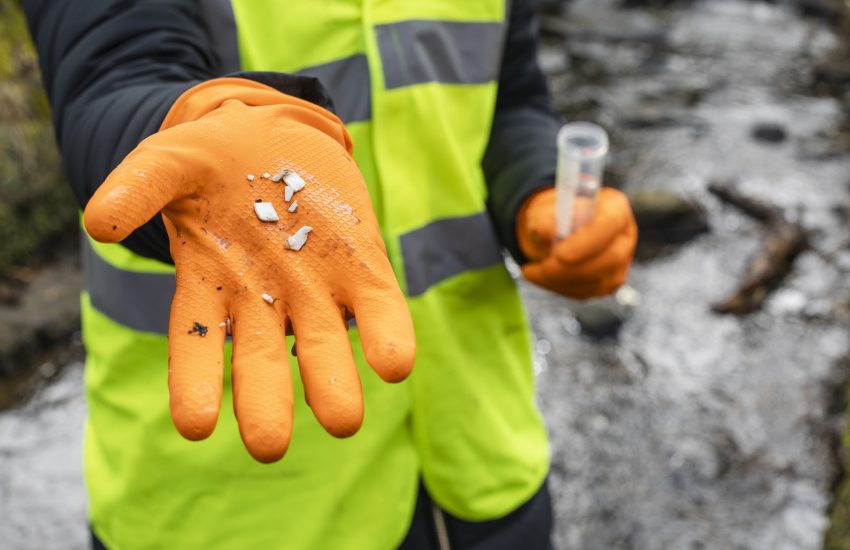* This article is a follow-up to our October 2021 post “No Asylum from Microplastics: How Recent Studies May Spark a Flood of Environmental Litigation.”
It was inevitable. As soon as the media mentioned that microplastics were found in babies’ fecal matter—our most innocent demographic—the proverbial gloves came off, and now plastics manufacturers are in the arena sustaining blows from all angles.
Backstory
Truth bomb: It is estimated that the once esteemed and widespread use of plastics in manufacturing, dating back to the 1950’s, has since resulted in a staggering 9 billion metric tons of virgin plastic production of which more than 70% is now waste. For better or worse, we know that when plastics break down (through either use, time spent in a landfill, or via manufacturing processes themselves), microplastics manifest, penetrating the environment at every stage of their lifecycle—from airborne discharge during manufacturing, molting during product use, the prolific mismanagement of waste, to storm water and wastewater discharges. While scientists have identified discernible amounts of these vexing microplastics in the air we breathe, the food we eat, the toys our babies teethe on, and in the water we drink, the extent of harm to human health and the environment remains largely unknown. Nevertheless, the mere possibility of harm has proven to be enough to precipitate claims against plastics manufacturers.
Microplastics Regulation Looming
As expected, California is spearheading the campaign to develop regulations targeting producers and users of plastics. In fact, the California State Water and Resources Board became the first regulatory body to define microplastics in drinking water, setting particle size parameters of microplastics between 1 nanometer and 5,000 micrometers. California’s next step is to develop accredited testing methods to collect and analyze microplastics samples.
Plaintiffs Are Not Beholden to a Regulatory Agenda
Plaintiffs are not stymied by California’s promised regulatory paradigm. Rather, the nation’s most vigilant environmental watchdogs are taking the lead—suing plastics producers and users under existing legal theories and filing, without hesitation, actions under federal environmental law, state consumer protection laws, and common law.
Tactic 1: The Clean Water Act
In San Antonio Bay Estuarine Waterkeeper v. Formosa Plastics Corp., the plaintiff alleges Formosa—an international manufacturer of resins and petrochemicals—violated its CWA permit, which prohibits the “discharge of floating solids or visible foam other than in trace amounts.” Armed with photographic, video footage, and water sample evidence, the plaintiff argued Formosa violated its CWA permit by discharging plastic pellets and PVC powder into a surface water body. Formosa’s defense relied upon the language of the CWA permit, arguing that because the permit itself did not specify a weight or concentration for the alleged discharge, there could be no discernible violation. The U.S. District Court for the Southern District of Texas disagreed, characterizing Formosa as a “serial offender” based upon demonstrable proof that the manufacturer discharged plastics on 736 days in conspicuous violation of its permit. Following the court’s decision, the parties entered into a consent decree wherein Formosa was required to not only pay over $3M in plaintiff’s legal fees, but also $40M to fund environmentally specific projects intended to offset the harm it allegedly caused.
Tactic 2: RCRA
Plaintiffs have also successfully brandished the federal Resource Conservation and Recovery Act (RCRA), aimed to regulate hazardous solid waste, as a crafty legal device to sue plastics producers. Again backed by a waterkeeper branded alliance, the plaintiffs alleged a plastics transporter wrongfully discharged plastic pellets into a number of surface water bodies. (See Charleston Riverkeeper et al. v. Frontier Logistics.) The plaintiffs not only claimed the plastics transporter violated the CWA by discharging into navigable waters, but also argued that the discharge of the plastic pellets itself amounts to solid waste. Thus, the plastics transporter created an “imminent and substantial endangerment” to human health and the environment, which is an express cause of action under RCRA. In advance of trial, Frontier agreed to settle, paying $1M to fund environmental projects to clean up the local waterways and an additional $250,000 toward plaintiffs’ legal fees. Frontier also agreed to implement the full scope of environmental safeguards recommended pursuant to an independent audit of its facility.
Tactic 3: Commodities and Securities Law
Plastics manufacturers have recently been subject to an unexpected plaintiff: the shareholder. In October 2021, a shareholder of Danimer Scientific Inc.—a manufacturer of polymers, resins, and plastic alternatives used in a variety of plastic products—filed a shareholder derivative suit alleging the company overstated its sustainability claims, resulting in millions of dollars in market capitalization losses. (See Perri v. Croskrey, et al.) Danimer’s marketing campaign, together with its SEC Form S-1 registration statement, claimed that one product in particular, “Nodax,” was fully degradable within 12 to 18 weeks of being discarded. However, the Wall Street Journal challenged Danimer’s claim, exposing doubt among experts that Nodax could truly degrade under natural conditions as advertised. Immediately after the WSJ’s reveal, Danimer’s stock price plummeted. The plaintiff then pursued litigation against the Danimer’s CEO, CFO, and company directors for breaching their fiduciary duties to the company by intentionally and/or recklessly allowing false representations to be made causing significant losses.
Sit Up and Get Ready
Plastics manufacturers should take heed and suit up for future battle. While microplastics regulations may not be imminent, microplastics litigation certainly has arrived, as the brief list of plaintiffs’ would-be tactics above shows.

